Ways and conditions for storing apples in winter
Obviously, you want to eat fresh apples harvested in your own garden all winter and even part of spring, so you decided to learn about the methods, conditions and rules for storing them.
Below you will find information on how to keep apples fresh and tasty for as long as possible.
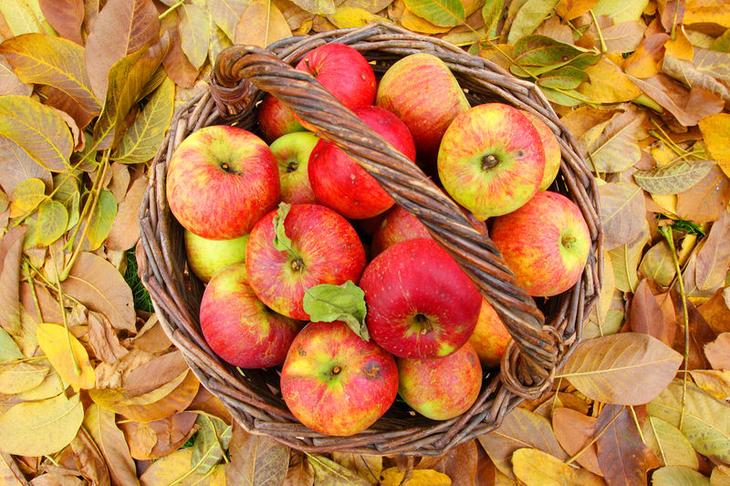
Content
Apple varieties suitable for long-term storage
You must understand that not all apple varieties are suitable for long-term storage.
Note! Naturally, summer varieties of apples are completely unsuitable for long-term storage: they are too soft and juicy, which is why they will begin to rot within a few days after you remove them from the tree.
Autumn and winter varieties are a different matter: they are ideal for long storage.
The most popular winter varieties of apples by ripening (storage) periods:
- Winter (maximum until March): Antonovka, Antey, Bogatyr, Jonathan, Idared, Red Delicious, Florina.
- Late winter (have the best keeping quality, can be stored until the end of spring): Spartan, Renet Simirenko, Sinap Orlovsky, Northern Sinam.
There are also early winter ones, but they are not suitable for long-term storage.
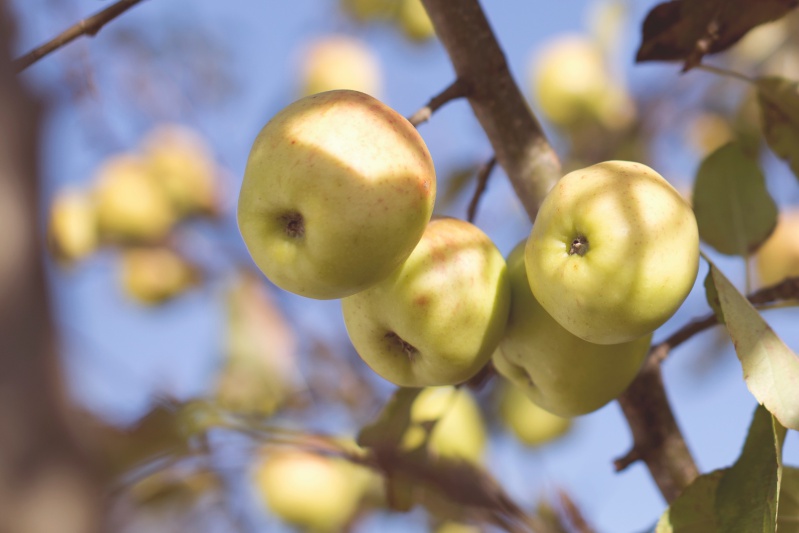
Rules for harvesting and preparing apples for winter storage
The shelf life of apples will depend on many factors: when the fruit was removed from the tree, how it was selected and prepared.
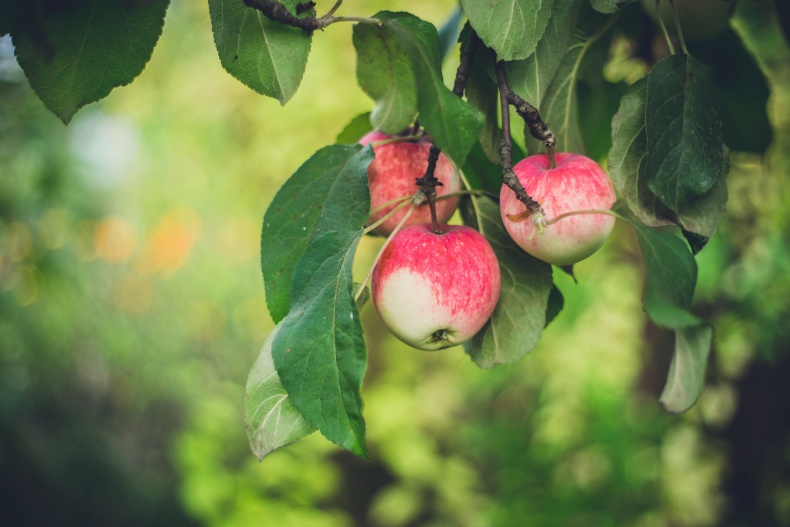
Terms and rules for collecting fruits for storage
The apples are harvested slightly unripe for storage (i.e. in technical and biological ripeness - it is also called removable, in other words, the fruits must pass the stage of technical ripeness, but have not yet reached biological = consumer). Moreover, it is better to do this manually, and not with special pullers (with them you will certainly damage the fruit and tear off the stalk).
Note! If you pick apples too green (in the initial technical ripeness), there will be no point in storing them, since such fruits in the end will still remain tough and unusable.
As for the approximate dates, as a rule, the harvest of winter apples is harvested late September-early October.
Interesting! If you are guided by the lunar calendar, then it is recommended to collect fruit on the waning moon, but not on the growing one.
In order for the fruits to be stored as long as possible, you need to consider the following rules for collecting them:
- You need to remove the fruits strictly in dry weather.
If the fruits are wet, then how long can we talk about storage?
Note! In no case should you wash or wipe the fruit before storing, otherwise simply remove protective wax coating.
- Fruits harvested after frost cannot be taken for storage: it is better to consume or process them immediately.
- The fruits are harvested directly from the tree (Not from the floor!) Together with stalks.
- You need to remove the fruits as carefully as possible, preferably only with your hands (grabbed with your palm and turned in any direction), without using a fruit picker.
If the apple's stalk breaks off during the harvest, then the fruit will soon rot in this place.
Preparation of fruits for long storage
Before laying the fruits for storage, they must be carefully examined, so to speak, to carry out a selection. Namely choose the fruits without any scratches, dents, decay or other damage.
In other words, you can and should lay only undamaged fruits.
It is better to discard all somewhat dubious specimens immediately = put up for processing or food.
Important! The fact is that one rotten or wormy apple in the end can cause damage to an entire box.
Of course, there are such "fruitful" years, when after rejection it turns out that there is nothing to store ... In this case, you can always put apples for processing: make juice, drying.
It is also very important to lower the apples into the basement or cellar just before freezing, but not before when it is still too warm inside your storage.
And some lay apples for storage, after having coated them glycerin.
How to store fresh apples in winter: optimal storage conditions
To keep apples fresh until spring, you need to follow a few simple rules, or rather storage conditions:
- the storage place should be cool, without access to sunlight, relatively dry (more precisely, moderately humid) and with good ventilation;
- ideal storage temperature - +1 .. + 4 degrees;
Both the temperature and the humidity should not fluctuate much, but be conditionally constant (of course, fluctuations of 2-3 degrees will not make the weather, but at 5-10 - still how).
- humidity should not exceed 90% (in general, it is even desirable that the humidity be in the region of 70-80%).
Excessively high humidity (drops on fruits)as unnecessary dry air, can harm the fruit: they either rot or begin to dry, becoming covered with wrinkles and cracks.
By the way! If there are no drops on the fruits, then the humidity can be considered acceptable.
In other words, the most suitable conditions for storing apples, thanks to which the fruits will definitely be stored for a long time and well, you can create only in the cellar or basement, cool, dark, moderately humid and well ventilated.
Storage space
As we have already found out, it is best for storing apples cellar or basement.

However, if you do not live in a private house, but in a city apartment, then you can try to lay apples for storage:
- to the balcony or loggia (it is desirable that it be insulated).
- in the winter refrigerator (in many apartments it is located under the windowsill in the kitchen).
Of course, you can store apples in household refrigerator (on the bottom shelf - in a vegetable box).

But due to the proximity to other products, apples will definitely not be able to be stored there for a long time, especially in an ordinary household refrigerator, the humidity tends to a minimum.
It's another matter if you have a store refrigerator, but they are usually installed in private houses.
Storage container
Ideally it should be wooden box with holes (so that the fruits ventilated).
But it will also work plasticas well as cardboard box.

Important! Apples will be stored longer and best if laid out in one layer, and one variety or ripening period.
Wherein:
- The box should be clean and dry.
- For disinfection, it is advisable to pre-fumigate the boxes with smoke (however, it is better to fumigate the entire storage).
- Bottom optimally lay containers thick paper.

Storage bookmark rules
- Apples are usually laid out with the stalks up.
- It is desirable that the fruits did not touch each other (lay loose), so lay out better in 1 layer.
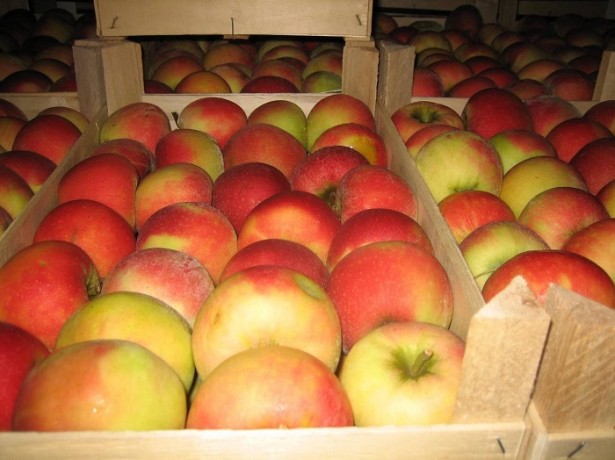
Important! Do not store apples (like pears) next to potatoes, sauerkraut: they will simply absorb excess odors.
- In one box apples should be stored only one variety or ripening period.
Earlier varieties will simply force the later ones to ripen ahead of time (the principle of ripening).
- During storage, regularly (at least once a week) carefully inspect the boxes and promptly get rid of spoiled fruits (take away for food).
Overfilling (interlayering) with sawdust, tyrsy, straw
To increase the shelf life, you can sprinkle your apples with one of the following substrates (bulk material), thanks to which the fruits will not lose moisture longer. In addition, in this way you can lay out apples in several layers (apples-sawdust-apples-sawdust-apples).
For this, the following are perfect:
- sawdust;
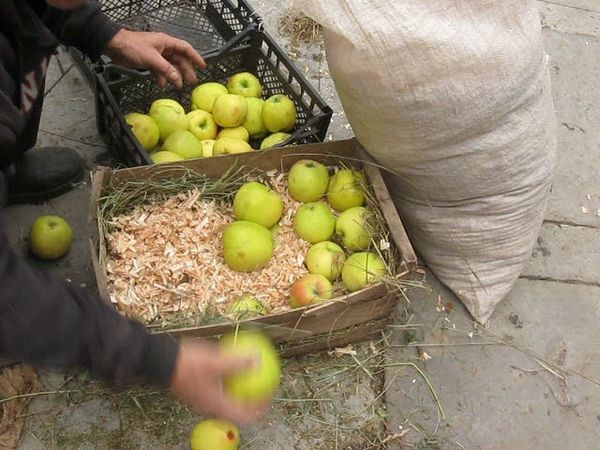
Only in no way do not use sawdust from coniferous tree species! The smell of resin from conifers spoils the taste and aroma.
- tyrsa;
- straw.
- sand + wood ash.
Wrapping fruit in paper and cling film
Of course, in the old fashioned way, you can each fruit wrap in paper (for example, a toilet, or even better in parchment).
Only not in the newspaper, ink is often toxic.
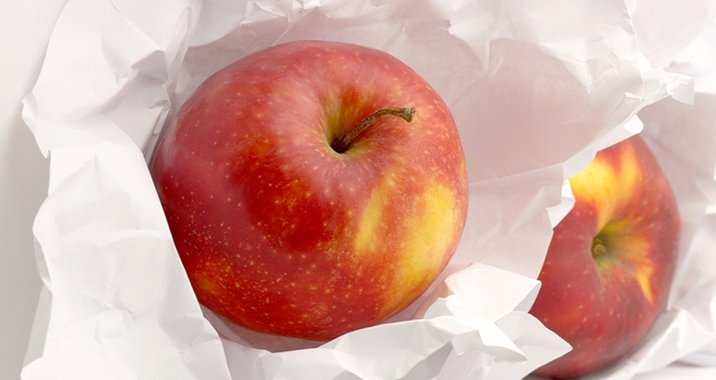
However! This method has one very significant disadvantage, namely, you simply will not be able to see when the fruits begin to rot ...
So it's even better to wrap every apple in cling film.
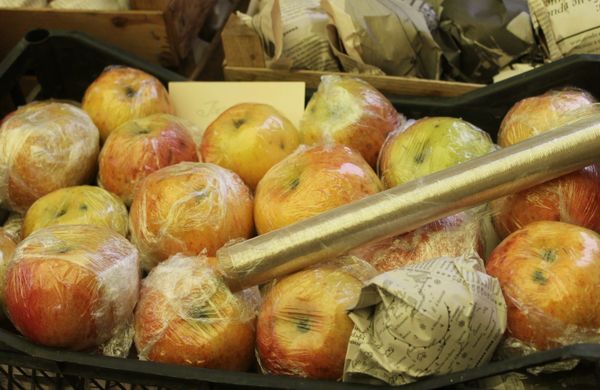
In general, you can put several apples at once in perforated (with holes) plastic bags, but this way the fruits will be stored worse than in individual packaging.
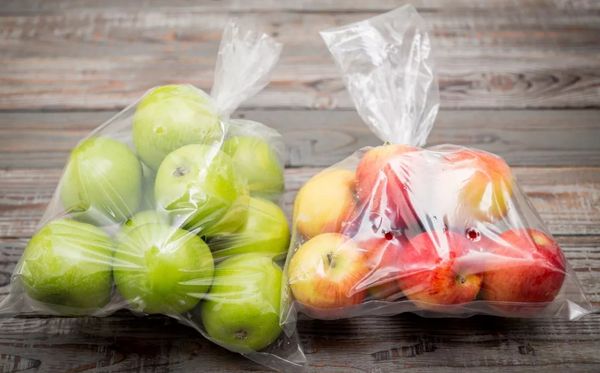
And what secrets of long winter storage of apples do you know?

